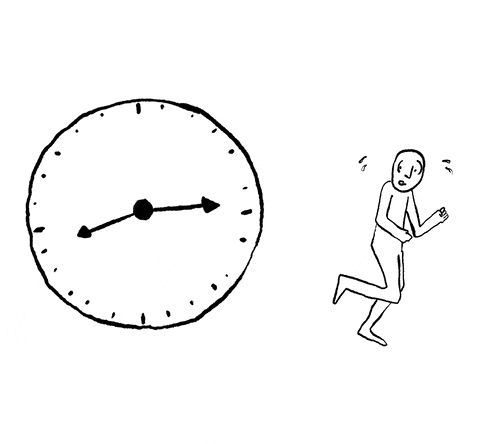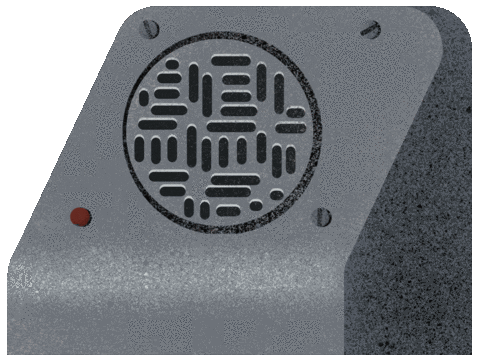TLDR - Quite a lot!
I have reached my first goal with Supportman of $100 MRR (monthly recurring revenue)! I picked this number because at $100, Supportman would be profitable, as well as make enough money to pay for my wife and I’s weekly coffee dates.
I knew it would be tough to get my first paying customers, but I didn’t know it would be this hard! When you’re dreaming about starting a business, it can be difficult to forsee all the work and effort that will go into it. I wanted to share my experience so you could see an example of what it could take to reach $100 MRR.
Time

I started Supportman on January 1st, 2020. At that point, I started doing customer discovery and talking to people in the support industry.
I made the first commit for the project on March 27th and then I launched the product on June 12. It wasn’t until August 7th that I had reached $100 MRR.
So it took a little over three months to create the MVP. And it took just about two months to reach $100 MRR after launch. It took 7.5 months in total.
That’s a long time! Or at least it feels longer than what I was expecting. $100 really isn’t that much, but it definitely is a start!
I should also mention that I have been working on Supportman on the side while maintaining my full-time job. I probably spend somewhere from 10 to 20 hours per week, but that can vary some from week to week.
Remember, not every founder has the same experience and yours will most likely be different. Some markets are faster to get going and it will definitely vary widely depending on if you are doing B2B or consumer.
Selling To Customers and Building Rapport

Like most software developers, this is my least favorite part - selling to potential customers. I did quite a lot of direct sales.
It takes so much time to find potential customers, research them on LinkedIn, find their email address, and then message them a handcrafted, personal email.
One of the ways that I found lots of my potential customers was by being in customer support slack communities. I DM’ed quite a few people in these groups.
Overall I probably private messaged/emailed around 120 potential customers. Some of those ended up being helpful conversations to learn more and some just flat out said no. Of course, the large majority didn’t reply at all.
Out of all of that grueling time-consuming work, only one of my current paying customers came from a cold slack DM.
I knew sales would be hard but I didn’t know it would be this hard!
I think the other part of the pie in sales is building rapport. If I am a person that people trust in the customer support community, they are going to be more willing to chat with me.
I can see how entrepreneurs who have grown a big audience or network in their industry would really have an upper hand here. They could get off to a much quicker start.
On the other hand - I am starting my customer support relationships from zero. And it is a lot of work! I was able to start with some of the companies that I did customer discovery with but none of them ended up converting to paid customers.
I have a lot more work to do in regards to building rapport and I have some ideas to do this in the future. I think the bottom line is, be helpful to the communities your customers are in and you will start to be seen as an expert in the space.
Intercom App Store

The Intercom app store was what I had hoped would be my main distribution channel. This was one of my reasons for wanting to create a Side Dish. I had hoped that I could build an app on a platform and that platform could bring me most of my leads.
So far this hasn’t really been the case. I have probably been getting about two sign ups a week from Intercom. And that is even with Supportman getting into the Intercom New and Noteworthy category. This is a category that shows Supportman on the front page of the app store!
There could be other problems causing this. It could mean that the problem I am solving or how I am showing it in my listing isn’t resonating with Intercom companies. Another problem is that it’s really hard to tell how many people are coming across my listing since Intercom doesn’t have any analytics.
So that being said, there is still a lot of work for me to do to figure the Intercom app store out and optimize it to help me find customers.

So, where did my first customers come from then? As I mentioned already, one was from cold messaging. The other three came from Twitter!
I created a Supportman Twitter account and started tweeting updates that I had made to the app. I also tried to create some value for Intercom customers by writing a couple of how to blog posts.
Every time that I made a new tweet, I would mention Intercom. A couple of these they liked and a couple of them they retweeted. Intercom customers saw the tweets and checked out Supportman.
This was great! There is definitely more I can do on Twitter to help push engagement and ultimately push users to Supportman. But again, creating valuable content takes time.
Building More Features

I started Supportman out as a pretty basic MVP. It was very minimal. It could just send Intercom conversation ratings to a Slack channel and a weekly report of the metrics support teams care about. I thought this was all I would need to get started but I was only partially right. Some of my customers just wanted those features, but just about everyone started to ask for more.
They also wanted more preferences around the features I had already created. I pretty quickly learned that I needed to make these changes and add them to get my first paying customers.
It looked something like this… a customer would ask for something to be added and then I would do it and have it ready for them a day later. This allowed me to blow them away by my fast response times which helped convert them to paying customers.
That being said, I had to build more features and update my existing MVP more than I would have expected in the beginning. This is all good though since it is helping to make my product even better and push it in the right direction.
Conclusion
You can probably already tell the conclusion and theme that I am pushing in this post. Building a SaaS business takes a lot of time and it is really hard to get to even something as little as $100 MRR! It was a lot harder than I expected.
But at the same time, I am excited that I have made it this far and feel like there is hope for Supportman in the future.
Just getting one paying customer is a pretty big deal because it means you have created something valuable for someone else.
Hopefully this gives you a glimpse of what it could take for you to reach this milestone as well!
Support
I hope this was helpful in some way. If you liked it, sharing the thread on Twitter is really appreciated!

